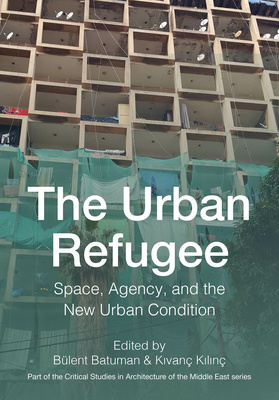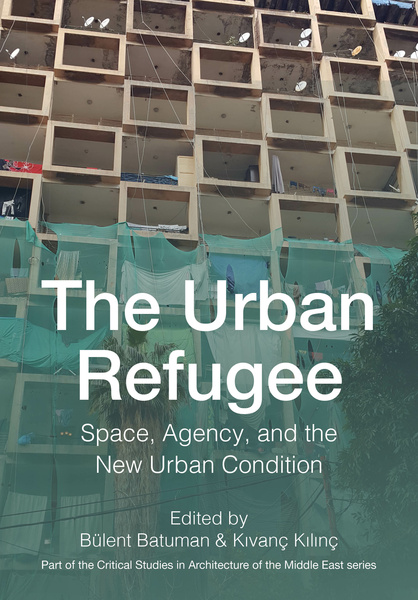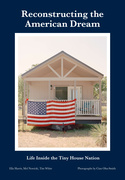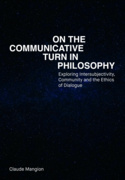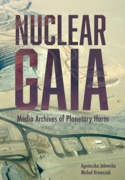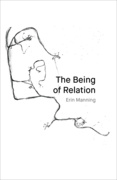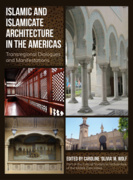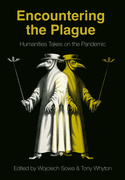The Urban Refugee (Book)
Space, Agency, and the New Urban Condition
This collection focuses on the spatial forms and urban consequences of forced migration. The chapters shed light on the multiple dimensions of the refugees’ urban experiences from the scale of the interiors to inner city neighborhoods and informal settlements, and from personal accounts to the formation of public discourse. 70 b/w illus.
Free sample: Introduction - The Urban Refugee: Migration, Neoliberalism, and the City
Edition
The presence of the refugee in the contemporary metropolis is marked by precarity, a quality that has become a characteristic feature of the neoliberal urban milieu. Bringing together essays from diverse disciplines, from architectural history to cultural anthropology and urban planning, this collection sheds light on both the specificities of the contemporary urban condition that affects the refugees and the multi-dimensional impact that the refugees have on the city. The authors propose investigating this connection through three interlinked themes: identity (informality, imagination and belonging); place (transnational homemaking practices); and site (the navigation of urban space).
In recent years, there has been a significant growth in scholarship on forced migration, particularly on the relationship between displacement and the built environment. Scholars have focused on spatial practices and forms that arise under conditions of displacement, with much attention given to refugee camps and the social and political aspects of temporariness. While these issues are important, the essays in this volume aim to contribute to a less explored aspect of displacement, namely the interaction between refugees and the cities they inhabit. In this respect, the volume underlines the specificity of the urban refugee as well as their spatial agency and investigates the irreversible effect they have on the contemporary urban condition.
The authors argue that viewing urban refugees solely as dislocated individuals outside the camp-like spaces of containment fails to understand the agency of the urban refugee and the blurred boundaries of identity that result. The term "refugee crisis" objectifies and denies active agency to refugees, homogenizing dislocated individuals and groups. The neoliberalization of the past four decades has led to the precarization of labour and the displacement of refugees, who frequently blend into the urban environment as hidden populations. Refugees are subjected to constant surveillance and the state's attempts to control them. However, these attempts are not uncontested, and the involvement of activist interventions further politicizes the urban refugee.
Bülent Batuman is an associate professor of architecture at Bilkent University in Ankara, Turkey. He studied at the Middle East Technical University and received his Ph.D. in History and Theory of Art and Architecture from Binghamton University, SUNY, USA. His recent work focuses on the relationship between Islamism and the built environment.
Kıvanç Kılınç is associate professor at Izmir Institute of Technology (IYTE), Turkey. He received his Ph.D. in the History and Theory of Art and Architecture Graduate Program at Binghamton University, SUNY, USA. His current research focuses on the transnational cultural and material exchanges, and their consequences, which shaped contemporary social housing practices in Turkey and the Middle East.
List of Figures ix
Acknowledgements xi
Introduction: The Urban Refugee: Migration, Neoliberalism, and the City 1
Bülent Batuman
Part 1. On Identity: Informality, Imagination, and Belonging 25
Chapter 1. Urban Refugees and Differential Inclusion through Urban Informality in Denizli, Turkey 27
Eda Sevinin
Chapter 2. Syrian Children’s Imagination and Play Areas beyond the Physical Reality of Urban Spaces in Beirut 51
Roula El Khoury and Paola Ardizzola
Chapter 3. From Longing to Belonging: Arab American Cultural Adaptation and Refugee Resettlement Practices in Houston, Texas and the Gulf Coast 73
Maria F. Curtis
Part 2. On Place: Transnational Homemaking Practices 101
Chapter 4. Opening Your Home to The Other: Living with a Stranger, Citizens Hosting Exiles in Ile de France 103
Stéphanie Dadour
Chapter 5. Housing Syrian Refugees in Saida under Protracted Displacement: Unfolding Spatial and Social Exclusion 127
Howayda Al-Harithy, Abir Eltayeb, and Ali Khodr
Chapter 6. Transnational Homemaking in Somali Malls: Cape Town, and Minneapolis 159
Huda Tayob
Part 3. On Site: Navigating the Urban Space 181
Chapter 7. Syrian Refugees’ Location Choice in Urban Areas as a Subjective Process: A Cross-case Comparison of Önder (Ankara) and Yunusemre (Izmir) Neighbourhoods 183
Feriha Nazda Güngördü and Zerrin Ezgi Haliloğlu Kahraman
Chapter 8. Gaza Buildings: Architectures of Precarity in Sabra, Beirut 213
Are John Knudsen
Chapter 9. Transience, Marginality, and Spaces of Refuge: Basmane Hotels District in Izmir 233
Kıvanç Kılınç and Şebnem Yücel
Contributor Biographies 255
Index 259
‘This book redefines the urban as a phenomenon of refugeehood, a circumstance of people simultaneously in and out of place, where logic or logistic of control coalesces with the unrestraint experiential quality of the urban. Batuman and Kilinc have brought together contributors committed to take seriously the agency and subjectivity of refugees in the co-production of urban space and in claiming the rights to the city. Together, they engage significant research materials with critical concepts in urban studies that cut across the North-South divide. They have made us aware that the global urban present and future is unthinkable without recognizing the phenomena of refugeehood that mediate the consequences of built environments and complex strategies of place-making.’
‘This superbly illustrated collection narrates rich stories that transport us across Somali malls, Parisian homes, Saida’s shelters, Denizli’s informal areas, Houston’s community centres, Beirut’s playgrounds, and Izmir’s old hotel district. With great insight, authors show how the new urban condition should be theorized not solely through the violent structures of the neoliberalism-migration nexus, but also through centring the spatial agency of urban refugees who are actively and resourcefully labouring and inhabiting cities.’

